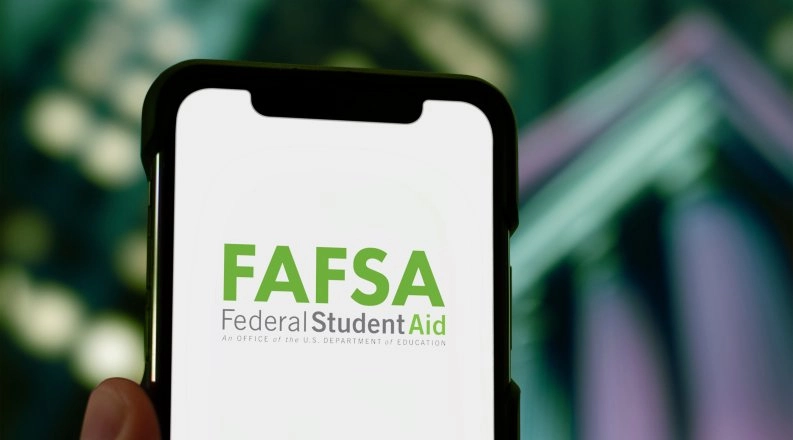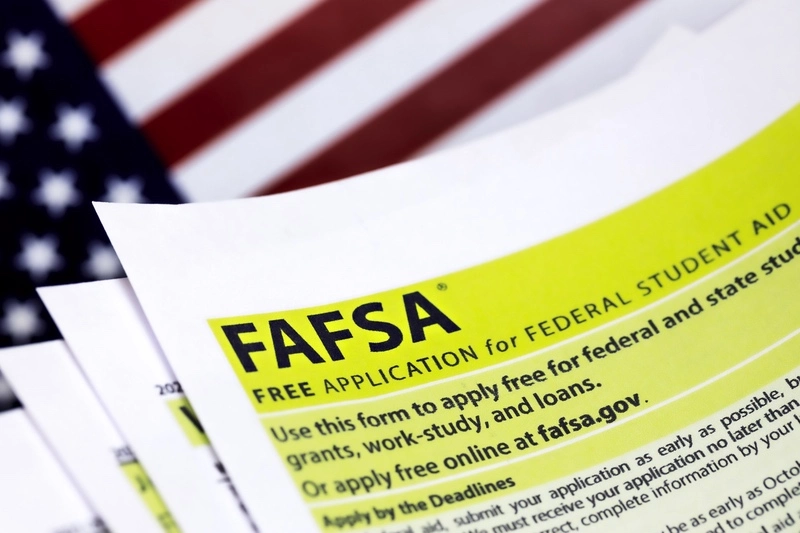The FAFSA can cover part or all of a student’s expenses, depending on their financial need, the type of school, and eligibility. The total amount includes federal grants, loans, and work-study. The amount that the FAFSA can cover varies each year based on your cost of attendance (COA) and student aid index (SAI).
For example, students at public universities often receive $12,000–$15,000 in combined aid on a $25,000 annual cost, while private school students may get $10,000–$20,000 toward a $60,000 bill. Most families receive partial funding, which reduces tuition, housing, and book costs.
At CollegeCommit, we guide students and families through every step of the admissions journey – including financial decisions that shape college choices. We help you understand the numbers, formulas, and expectations before you apply so you can move forward with confidence.
For families preparing applications soon, our college application tips can help you stay organized.
Our team includes former admissions officers, Ivy League graduates, and senior mentors with over 20 years of combined experience. We support students as early as 8th grade and serve families nationwide and globally.
Table of Contents
ToggleKey Takeaways
- FAFSA can cover part or all of college costs through federal grants, loans, and work-study, depending on each student’s financial need.
- The maximum Pell Grant for the 2025–26 academic year is $7,395, with total aid reaching up to $22,895 when including loans and work-study.
- Eligibility depends on the COA and SAI, with lower-income families receiving more aid and higher-income families qualifying for limited loans or work-study.
- Student and parent assets are weighted differently: about 5.64% of parent assets and 20% of student assets are counted toward eligibility.
- Families can use the FAFSA Aid Estimator on StudentAid.gov to project expected aid and plan early.
What FAFSA Covers and How Much It Pays
The FAFSA is the official application for federal student aid. It connects students to grants, loans, and federal work study through the Department of Education. FAFSA may include tuition, housing, and books – but it rarely covers all costs.
Typical FAFSA Aid Amounts by Income Tier
Family Income Range
Average Annual Federal Aid
Primary Aid Type
Under $50,000
$12,000–$17,000 approx
Pell Grants, Loans, Work-Study
$50,000–$100,000
$6,000–$12,000 approx
Partial Grants, Loans
$100,000–$200,000
$2,000–$6,000 approx
Loans, Limited Work-Study
Over $200,000
$0–$3,000 approx
Unsubsidized Loans
Sources
Disclosures
- “Average Annual Federal Aid” dollar ranges are approximate and for illustration only. Actual aid depends on Cost of Attendance (COA), Student Aid Index (SAI), enrollment, and program type, per Federal Student Aid guidance.
- Income brackets are simplified for readability and do not reflect state/institutional grants or scholarships. See College Board Trends for observed patterns in aid by income group.
- Use the official Aid Estimator to obtain a personalized estimate; school financial aid offers may differ.
Aid amounts vary by income. The Department of Education reports that lower-income students often qualify for larger grants, while higher-income families receive limited loans or work-study.
What Is the Maximum Amount FAFSA Gives? The maximum federal student aid amount changes annually. The Pell Grant can reach about $7,000 per year.
Many families also ask how much the FAFSA grant is in total. It often combines Pell Grants, loans, and work-study to form a major share of federal aid for eligible students.

What Is the $7,000 Education Grant?
The $7,000 figure refers to the upper range of the Pell Grant. This grant doesn’t require repayment and serves as the foundation of federal financial aid.
For 2025–26, the maximum Pell Grant is $7,395, and total aid for some dependent students can reach $22,895, combining grants, loans, and work-study.
Average FAFSA Grant and Loan Amounts
Students often ask how much they will receive from FAFSA or how much FAFSA gives on average when estimating aid.
Typical undergraduate awards range from $4,000–$5,000 in grants, with loans based on family need and enrollment status. Together, these help students pay for college, though families often contribute beyond FAFSA coverage.
Types of Aid Covered
FAFSA connects students to:
- Grants – need-based and not repaid
- Loans – subsidized, unsubsidized, or private student loans
- Work-Study – jobs that help students earn during school
Completing the FAFSA correctly ensures eligibility for each program.
FAFSA Coverage by School Type
FAFSA coverage differs between community colleges, state universities, and private institutions.
At CollegeCommit, we help families compare costs to make informed choices. If you’re beginning your research, knowing what you need to get into college can help align academics with financial planning.
Coverage for College and Community College
For in-state community or public college students, Pell Grants often cover most tuition. Living expenses and books may require extra support through savings or part-time work.
Coverage for Graduate and Professional School
Graduate students don’t receive Pell Grants but can apply for Direct Unsubsidized or Grad PLUS federal student loans. We help families evaluate how these loans fit long-term financial goals.
Will FAFSA Cover My Entire Tuition?
FAFSA rarely covers full tuition at private schools. Grants and the work study program help offset costs, but additional funding is often needed.

Factors That Affect Your FAFSA Amount
Understanding the FAFSA formula helps you estimate how much student financial aid you can receive and avoid surprises.
Cost of Attendance and Family Contribution
The cost of attendance defines the aid limit. The student aid index (SAI), based on income and assets, determines how much your family must contribute. FAFSA subtracts the SAI from the COA to calculate need-based aid.
Income and Asset Thresholds
Income, savings, and family size influence eligibility. Roughly 20% of student assets and 5.64% of parent assets are counted toward aid. Knowing how these are calculated helps families prepare before filing.
How Family Income Affects Eligibility
Families earning $75,000 might qualify for partial Pell Grants, while those at $100,000 may receive loans or work-study. Above $400,000, aid is usually limited to unsubsidized loans.
FAFSA Outcomes and Eligibility Limits
How Much FAFSA Gives for Low-Income Students
Low-income students often receive full Pell Grants and additional support. Part-time jobs through work-study also help cover living costs.
Lifetime Financial Aid Limits
Pell Grants can be received for up to 12 full-time semesters. Loan programs have total borrowing limits, so long-term planning is key.
What Students Report About FAFSA Coverage
Many students say FAFSA helps them stay enrolled, but it doesn’t cover all expenses. Combining grants, federal work study, and family contributions builds sustainable funding.
Estimate and Maximize Your FAFSA Aid
Using the FAFSA Calculator or Estimator
The financial aid calculator on the federal site gives a preview of potential aid. Use the official FAFSA Aid Estimator on studentaid.gov/aid-estimator to see how your income and savings influence eligibility.
Reviewing Your Student Aid Report (SAR)
After you fill out the FAFSA, the Student Aid Report shows your eligibility. Review it for accuracy – small errors can delay your aid.
Strategies to Increase Aid
We guide families to:
- Submit the free application for federal aid early.
- Appeal for awards if finances change.
- Consider private student loans if needed.
- Combine federal and institutional aid.
When preparing your university application, align financial documents early to avoid delays.
At CollegeCommit, we don’t just advise – we engineer your child’s admissions edge.
Quick FAFSA FAQs
Yes. Higher-income families may still be eligible for federal student loans and work-study programs.
No strict income limit exists. Eligibility depends on SAI, school cost, and enrollment status.
Yes. Graduate students can apply for Direct Unsubsidized Loans and Grad PLUS Loans.
Final Takeaway: Plan Early for Full Coverage
FAFSA remains an essential funding tool, but it’s only one part of a larger plan. At CollegeCommit, we align admissions and financial strategies to help families make informed decisions.
We guide students through Early Action, Restrictive Early Action, Early Decision, and Regular Decision. Families can review the college application deadlines to plan their submissions with confidence.
We offer a free 30-minute consultation that includes a readiness review and personalized admissions roadmap.
Ready to transform uncertainty into opportunity? Join our upcoming cohort at CollegeCommit: Where Preparation Becomes Placement.


